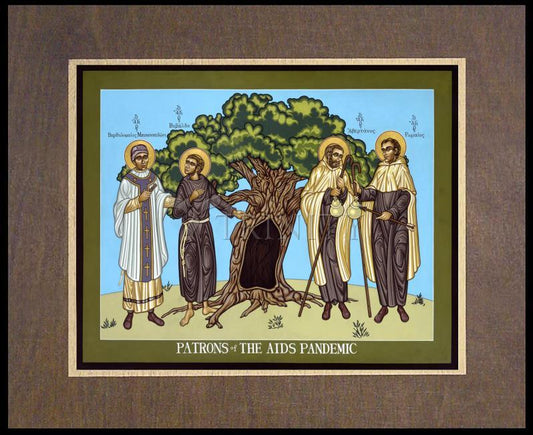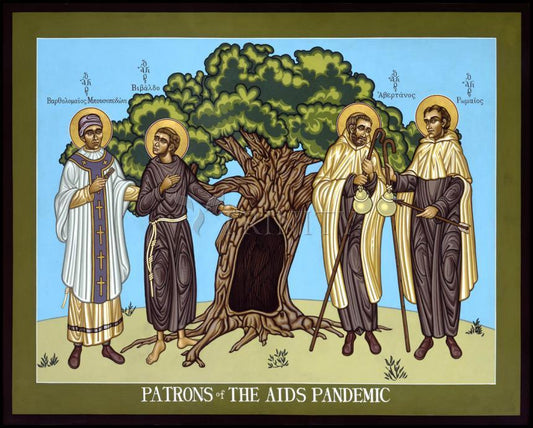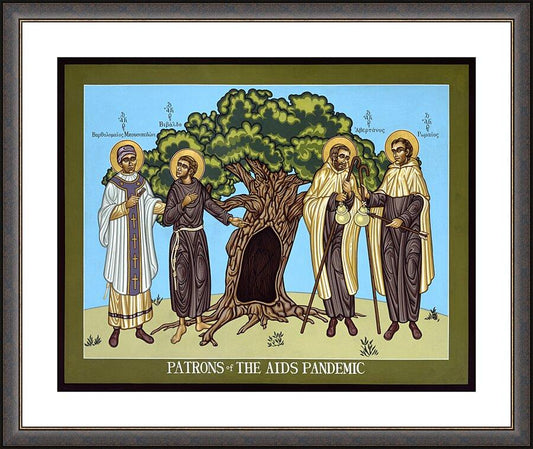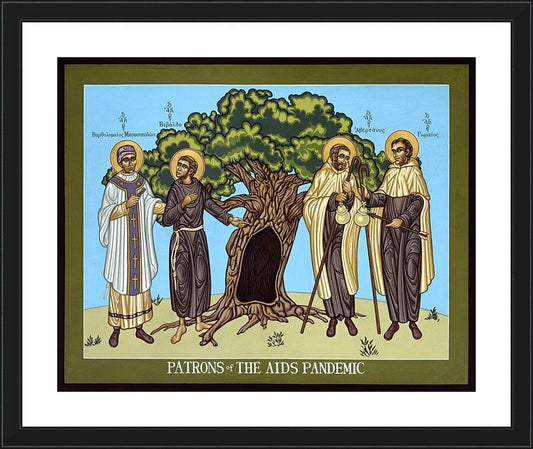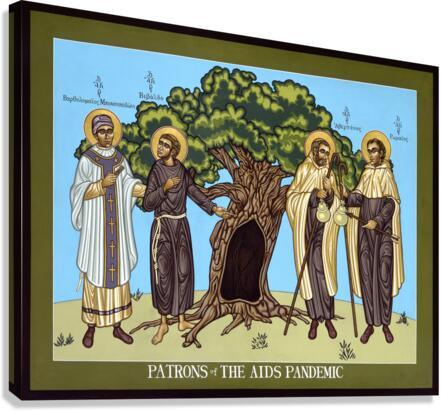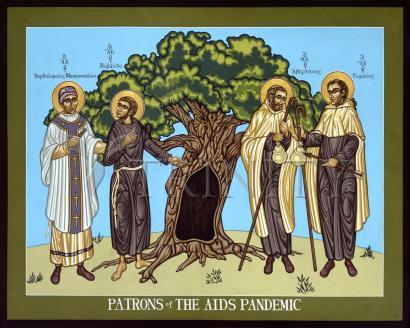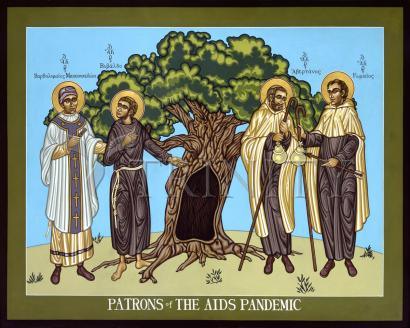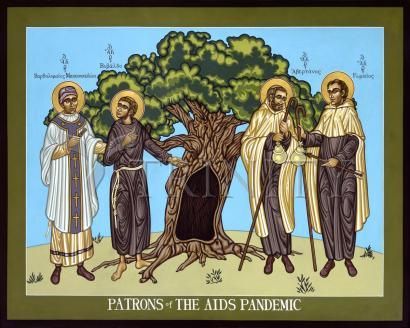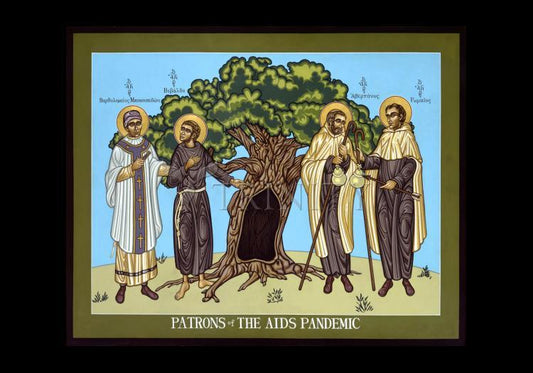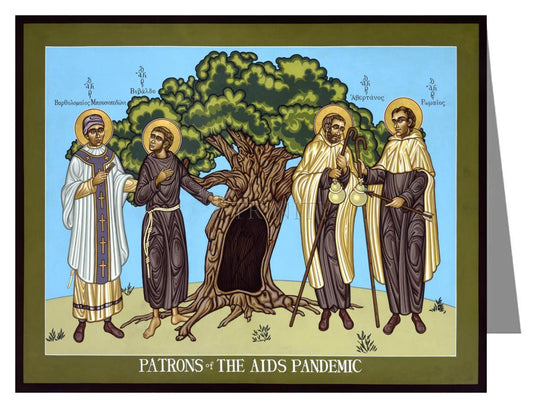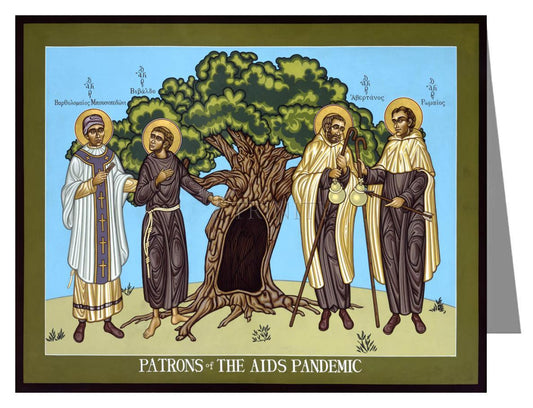Blessed Bartholomew Buonpedoni of San Gimignano is better known to his devotees as Blessed Bartolo. Perhaps the nickname indicates his popularity in Tuscany.
Bartolo's home was in Mucchio, a hamlet near the city of San Gimignano. San Gimignano is often referred to in our day as the "skyscraper city." It had many wealthy residents in the 13th century, and in their pride each sought to build a tower higher than that of his neighbors.
Signor Buonpedoni may not have been so worldly as to build a show-tower in Mucchio; but he was worldly enough to lay early plans for his son to marry and follow a commercial career.
Bartolo, on the other hand, had more spiritual dreams. So rather than follow his parents' decision, he left home and got a job as an ordinary lay servant at the Benedictine Abby of St. Vitus in Pisa.
The abbot of St. Vitus quickly saw the talent of Bartolo, and the skill he demonstrated in conducting the monastery infirmary. So he asked this lay servant to consider becoming a monk and a priest. Buonpedoni asked time to think it over. Our Lord Himself assisted him. Appearing to him in a dream, he said, "You will win your crown not as a monk but by twenty years of physical suffering."
Bartolo decided against becoming a monk and in favor of becoming a diocesan priest. He was ordained at the age of 30 and appointed to the parish church of Peccioli. Thereafter, his only connection with a religious order was his membership in the Franciscan tertiaries. It was in the spirit of St. Francis that he took a lead in Christian charity among the ill.
One person whom he took into his house was Vivaldo (or Ubaldo), whom he had converted from a wasted life. Vivaldo was his right-hand man. (After Bartolo's death, he became a holy hermit revered for his miracles. Pope St. Pius X beatified him Blessed Vivaldo of Boscotondo in 1908).
In 1280, while going about his duties nursing the sick, Bartholomew contracted the disease then called leprosy, now Hansen's Disease. Leprosy was widespread in Europe in medieval times because of the lack of proper sanitation. Now, as Bartholomew recognized, the prophecy he should suffer for two decades, began to be fulfilled. Lepers had to live in segregated housing, so Bartolo moved into the leper house at nearby Celloli. The loyal Vivaldo went with him, although he himself did not contract the ailment. His bishop made Bartolo director and chaplain of the Leprosarium. Like Fr. Damien DeVeuster of Molokai a century ago, he found among his "fellow lepers" a new apostolate. Although the disease ate away at his flesh and bones, it never prevented him from celebrating Mass. For exactly 20 years he lived this life, his patience winning for him the title "The Job of Tuscany." There was no formal beatification after his death, but a local feast began to be celebrated in his honor in 1499 and in 1910 Pope St. Pius X recognized him as "equivalently beatified."
Today Hansen's Disease is all but conquered by science. It has been replaced by another violent and even more deadly plague, called AIDS. The victims of AIDS, as suffering human beings, should no less be the object of Christian charity and loving care.
We should never forget that when we minister to the sick, no matter what their ailment, we are, as the gospel reminds us, ministering to Jesus Himself. A Christian thought!
"Excerpts from Bl. Bartholomew Buonpedoni by Fr. Robert F. McNamara
The parents of Avertanus, of Limoges, France, were at first averse to their son's intention of entering religious life, dreading to be separated from him. But he reassured them, "I am not forsaking you"I have you engraved in my heart and soul." At this, his parents gave their consent, and he humbly kissed their feet.
Avertanus entered the Carmelite Order, becoming a lay brother, content with the lowliest tasks. His rich prayer life was marked by frequent ecstasies. In the dead of night he would crawl on his hands and knees to the top of a nearby hill to pray there until dawn.
Avertanus obtained permission to make a pilgrimage to Rome with a fellow Carmelite brother, Romaeus. But before reaching Rome, Avertanus contracted the plague, spending his final hours in a hospital near Lucca, Italy. On his deathbed, he prayed, "Come, sweet Jesus, with your infinite mercy; help this soul devoted to you." In response to his plea, he experienced a luminous vision of Christ and the Blessed Mother, in which Christ said to him, "Come, beloved soul"into the rest of your Savior." Shortly after Avertanus' death, Romaeus also died of the plague.
"Excerpts from Bls. Avertanus and Romaeus by Catholic Online



